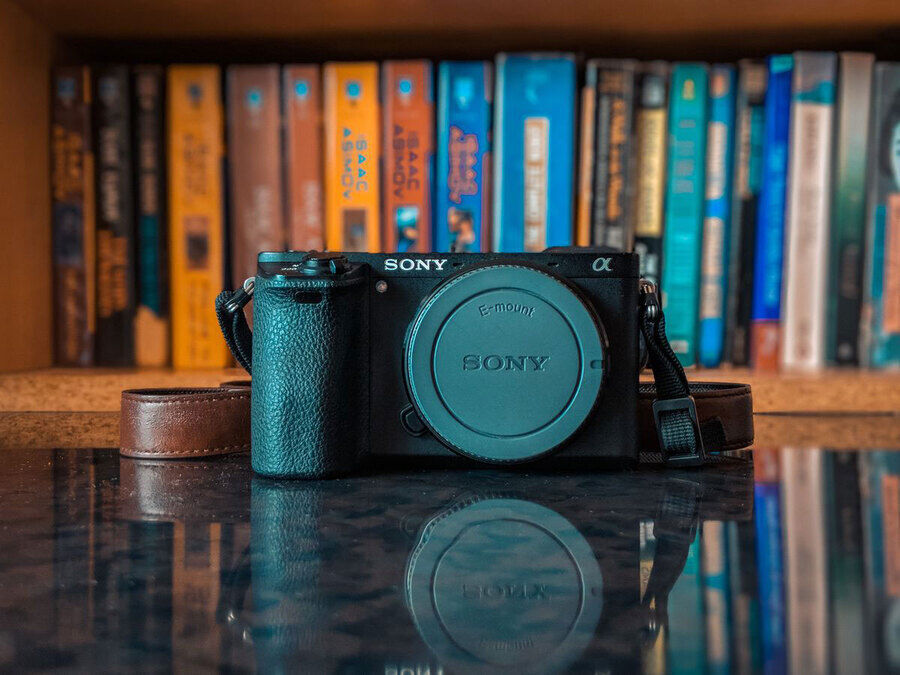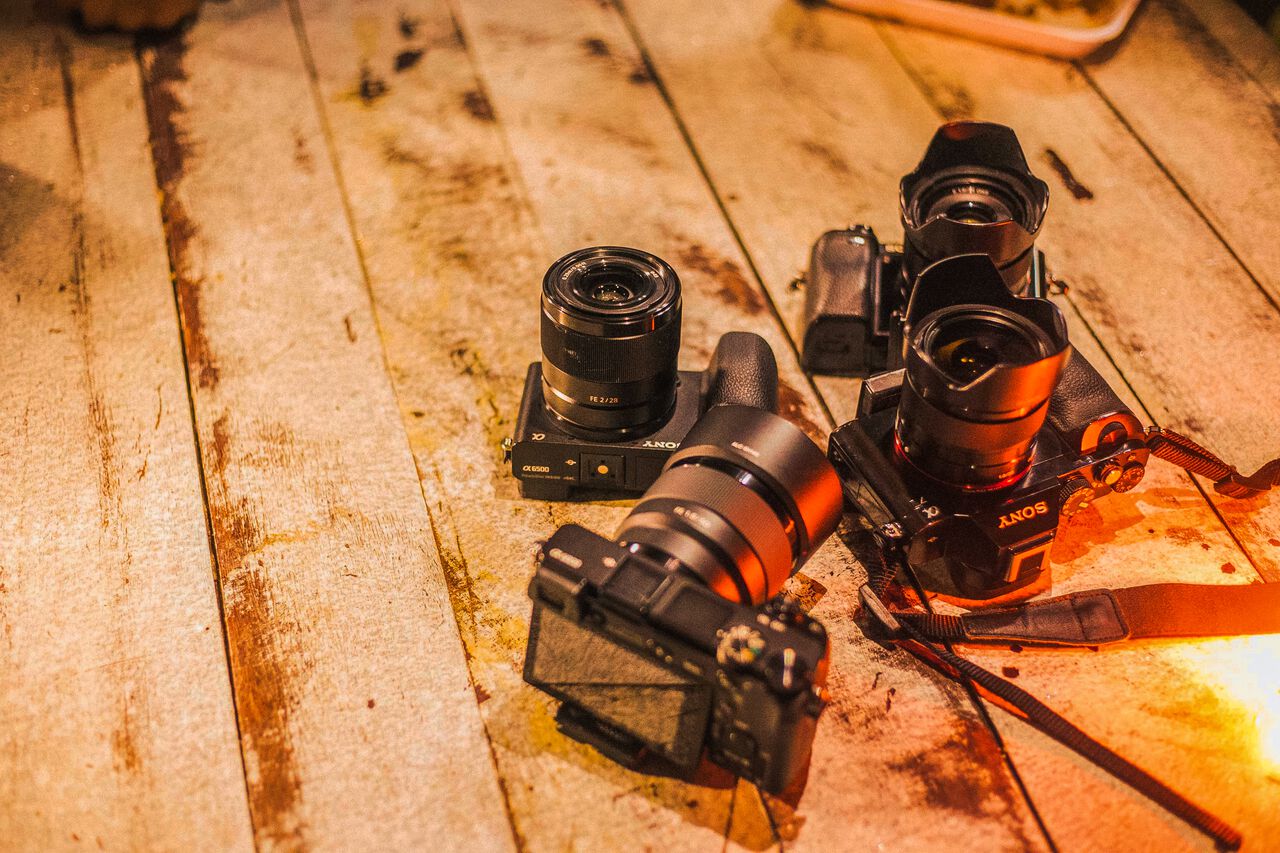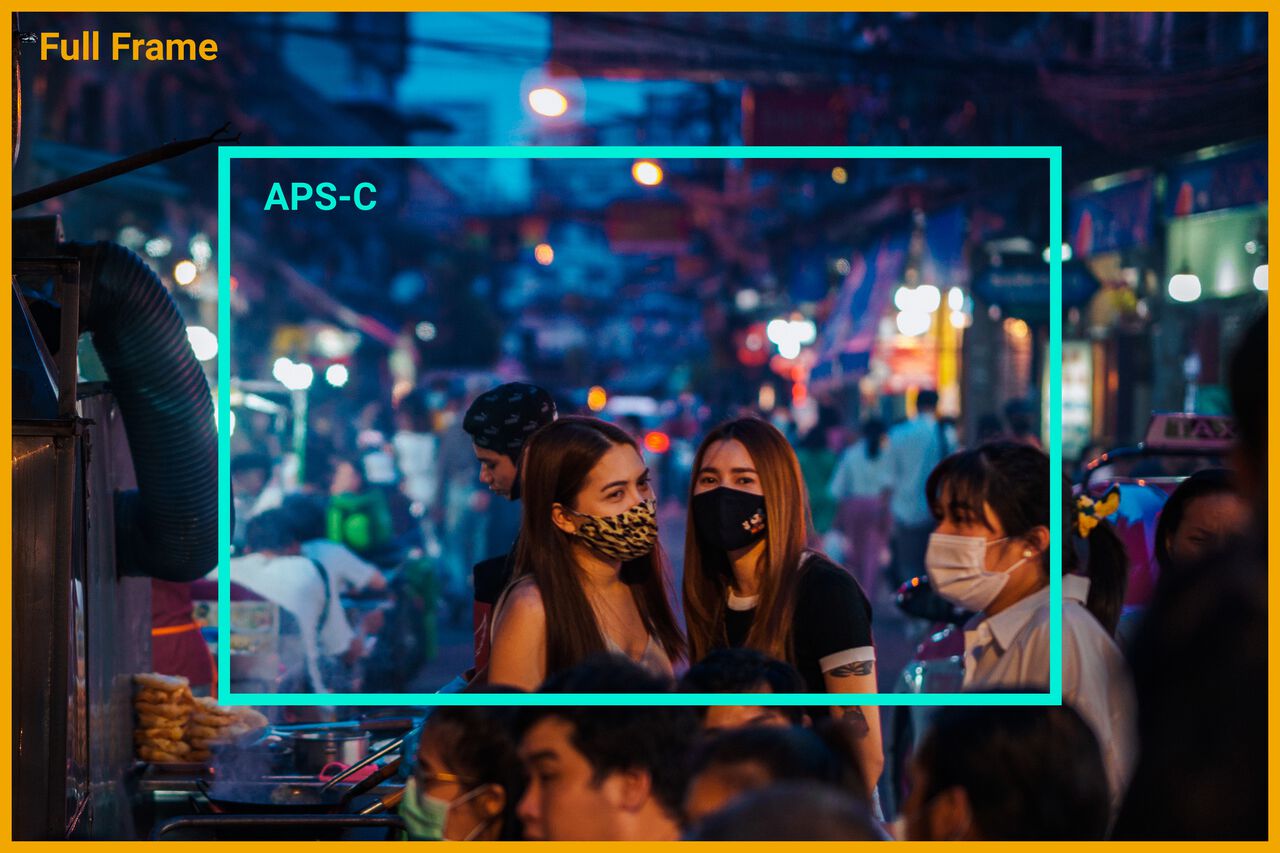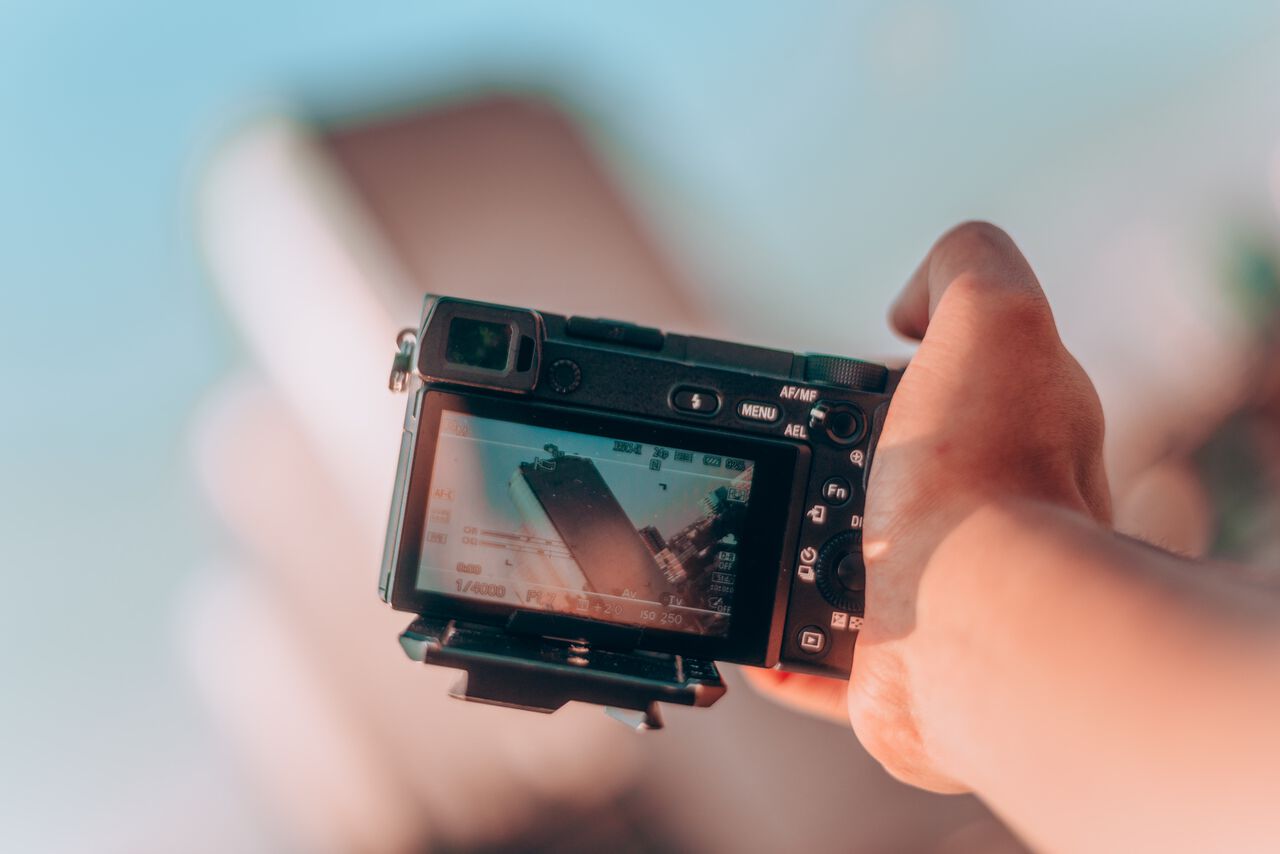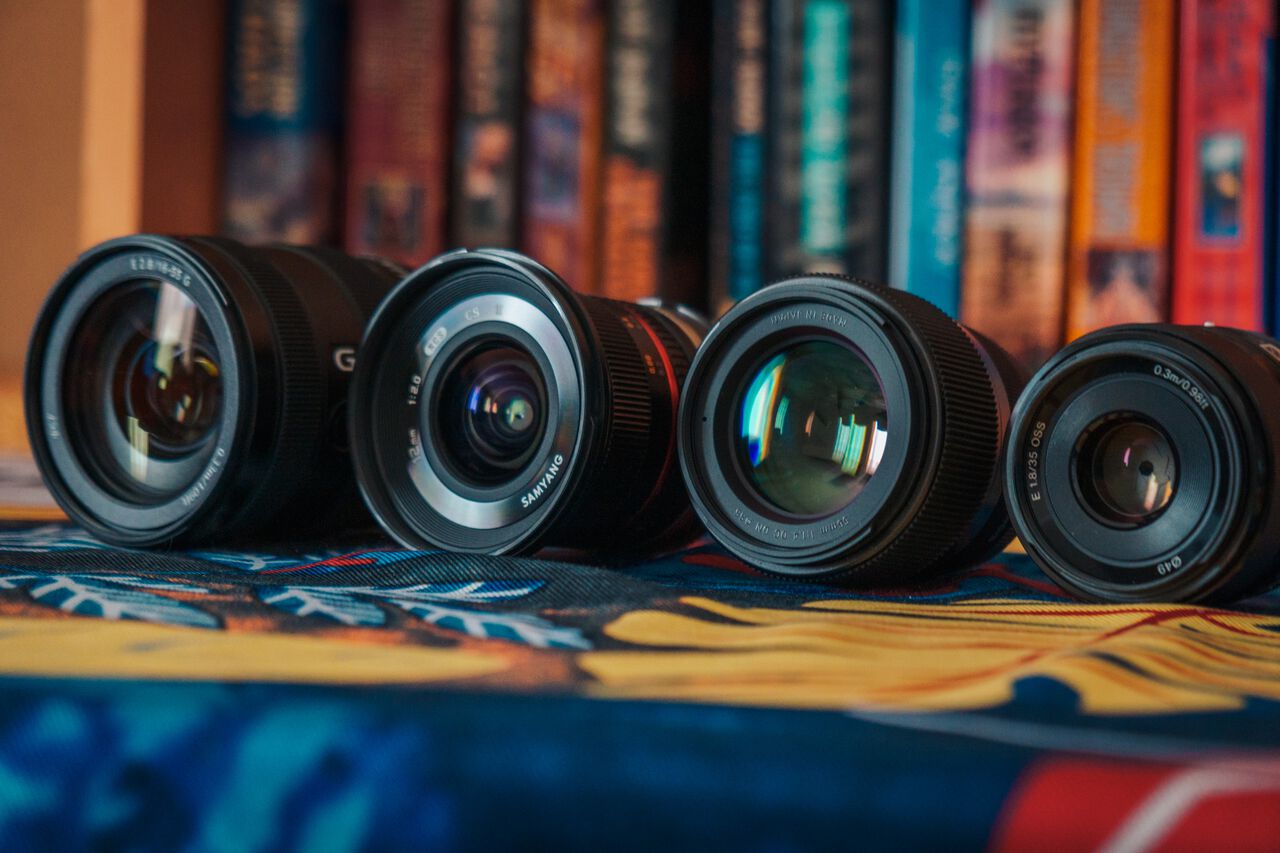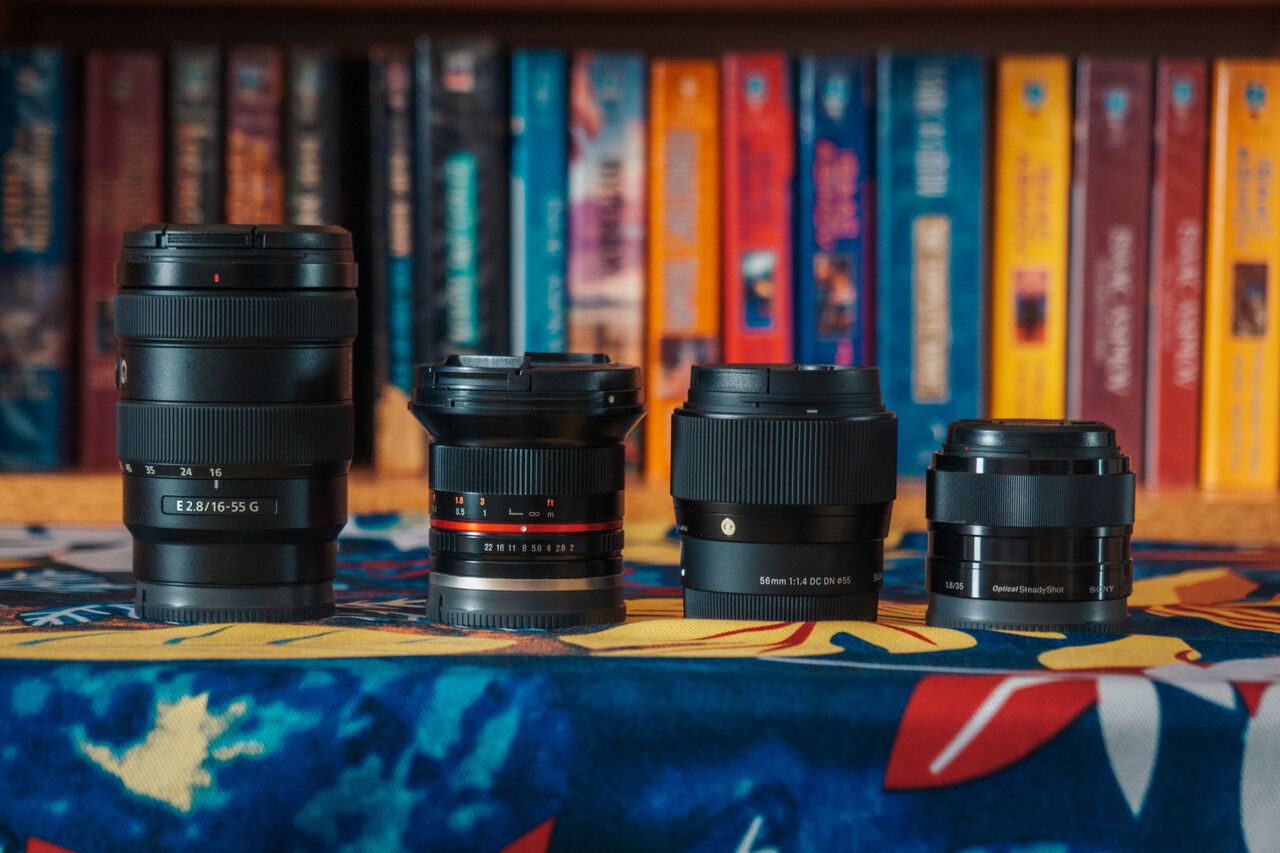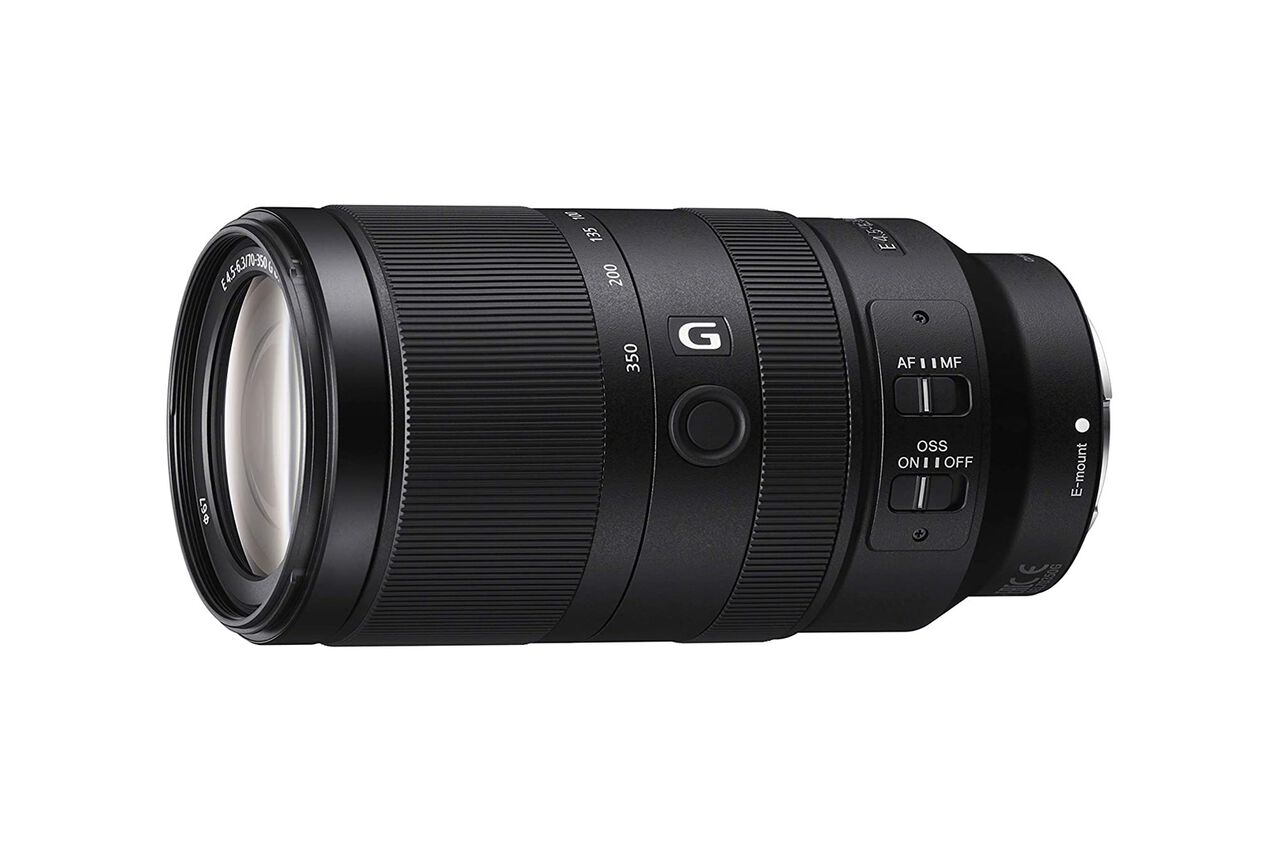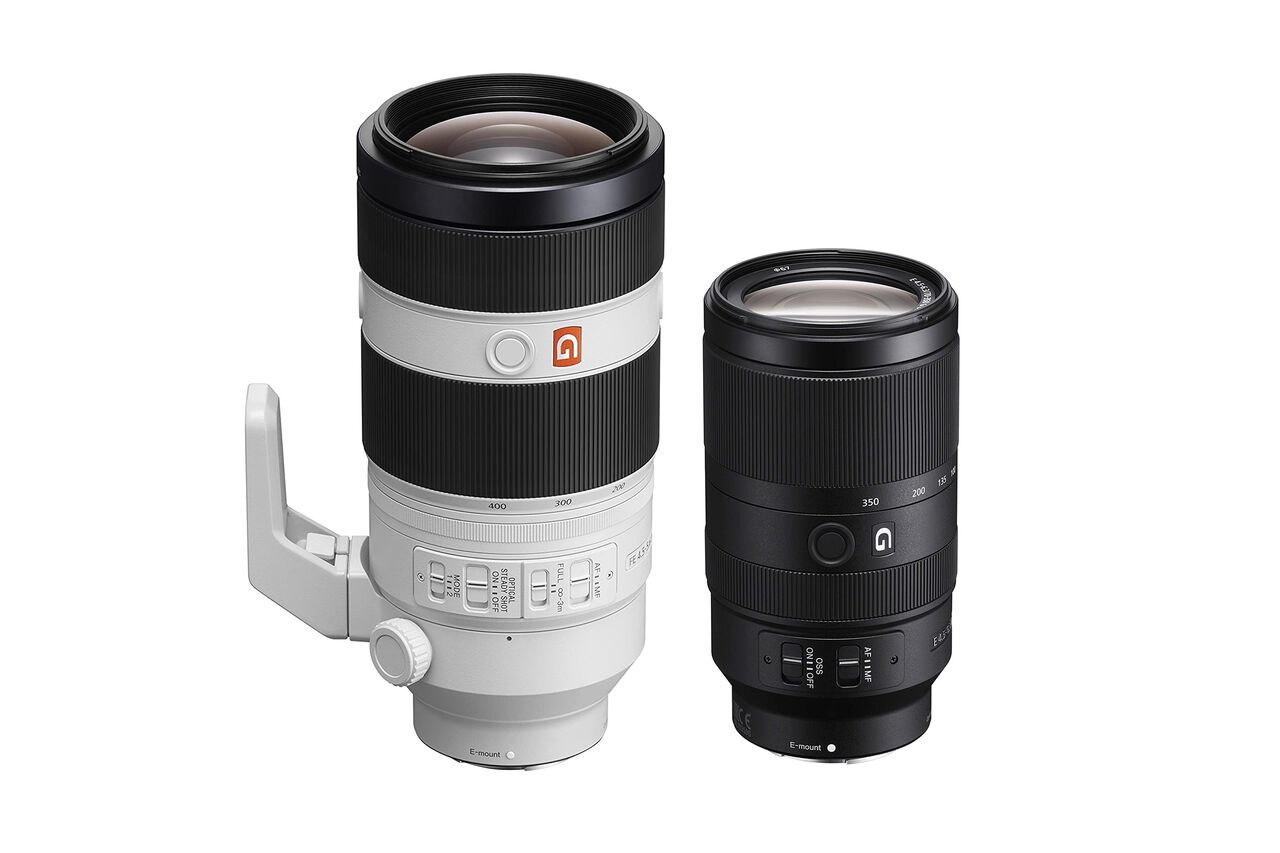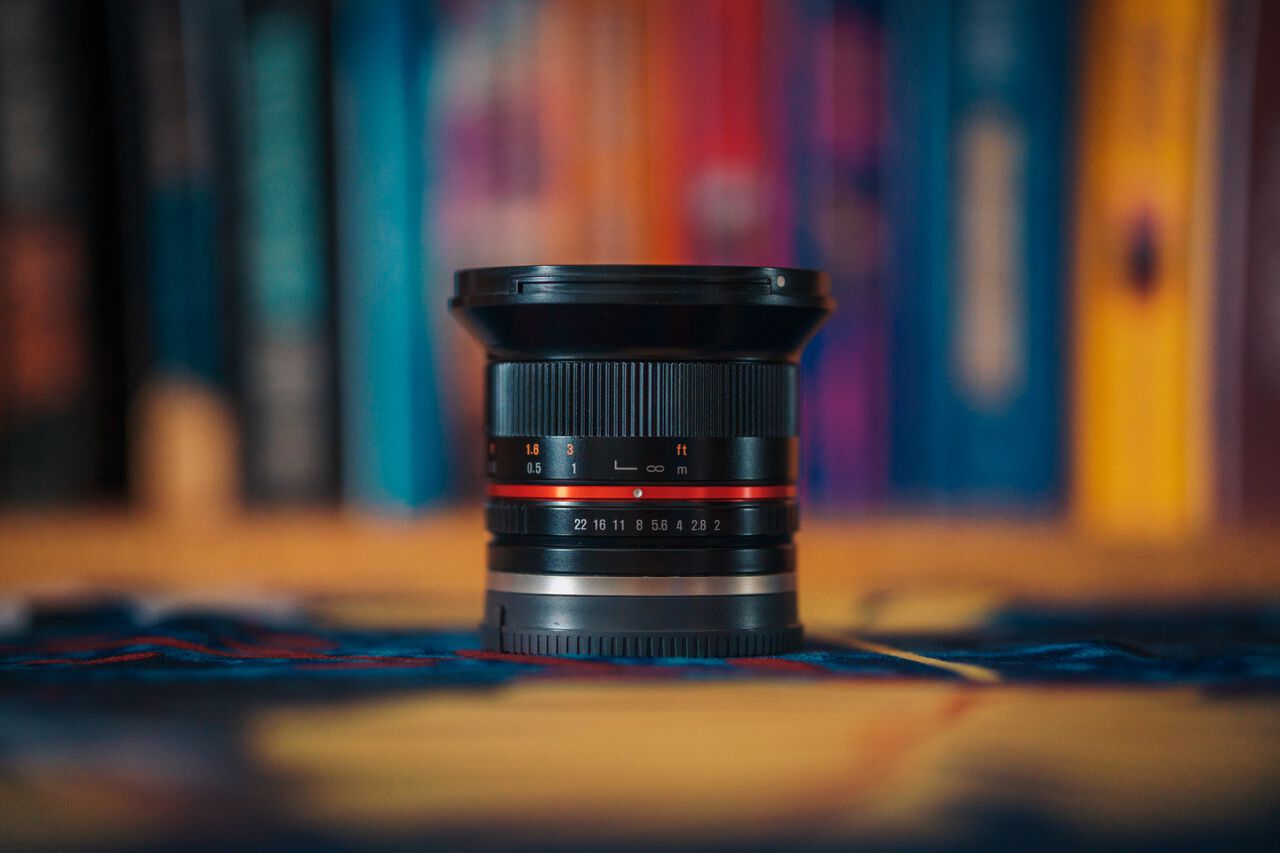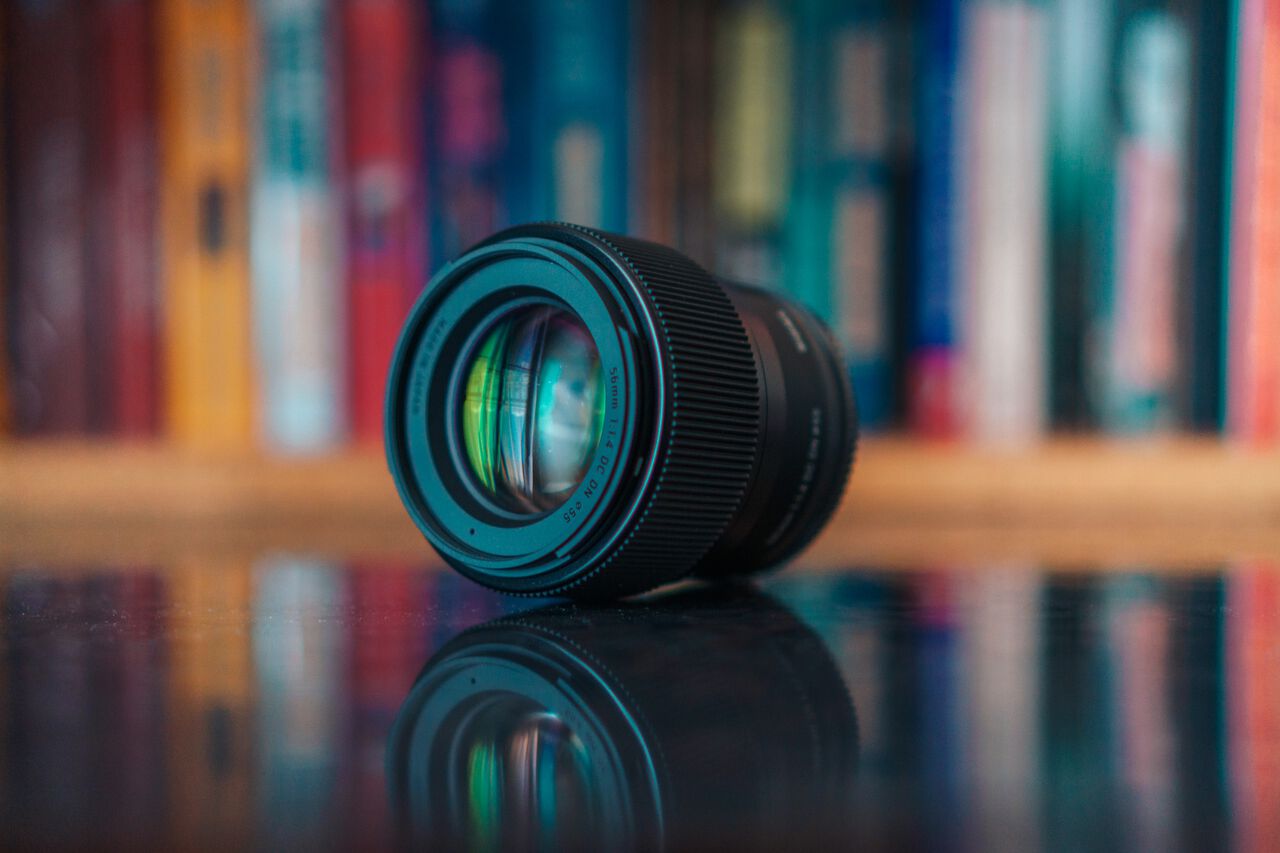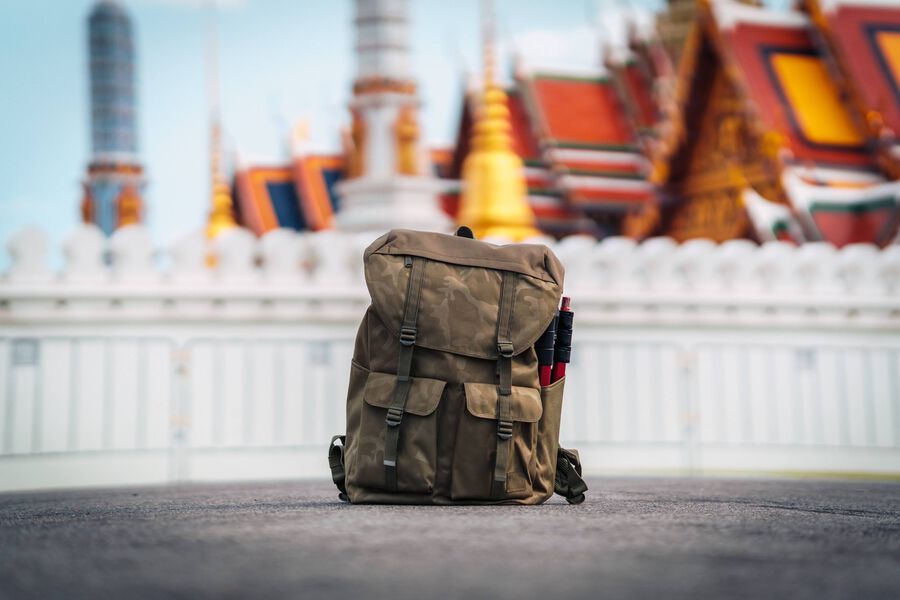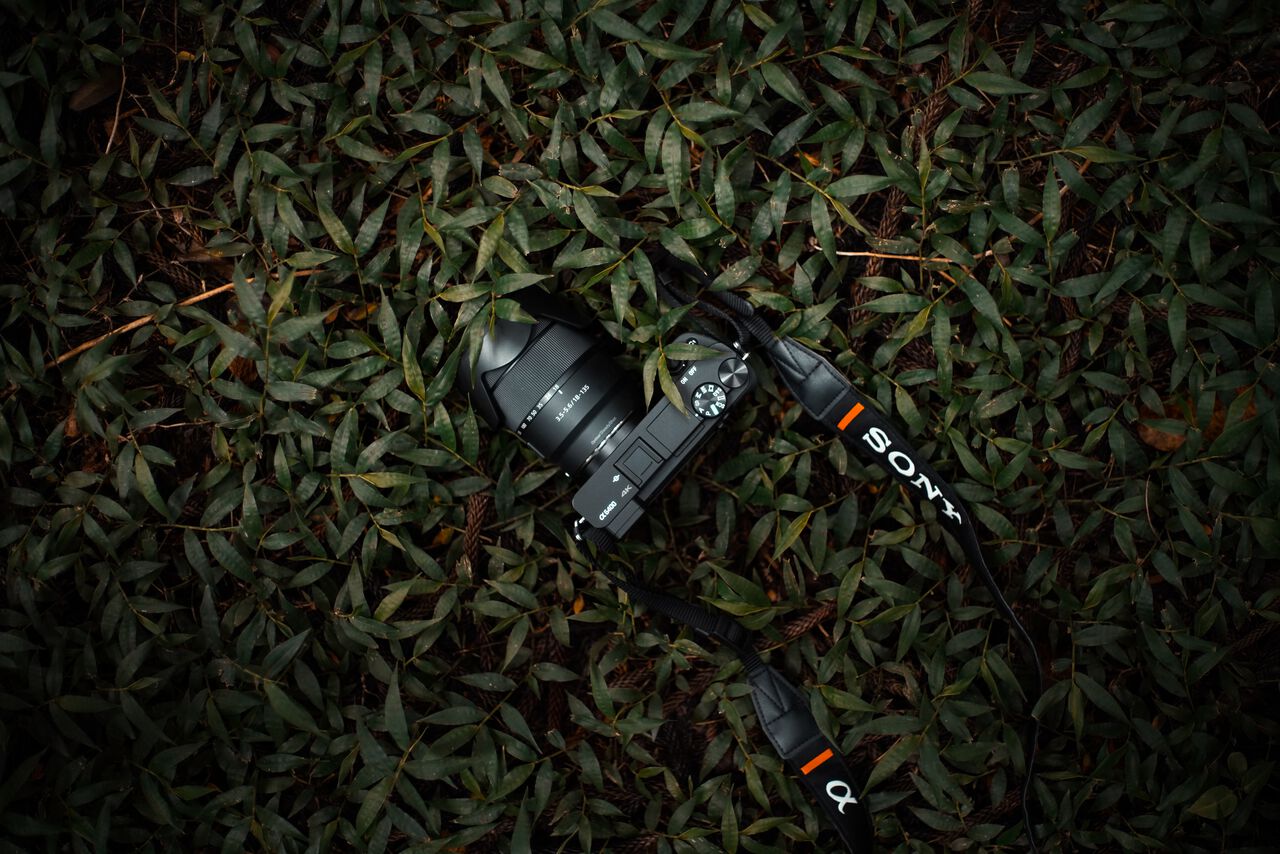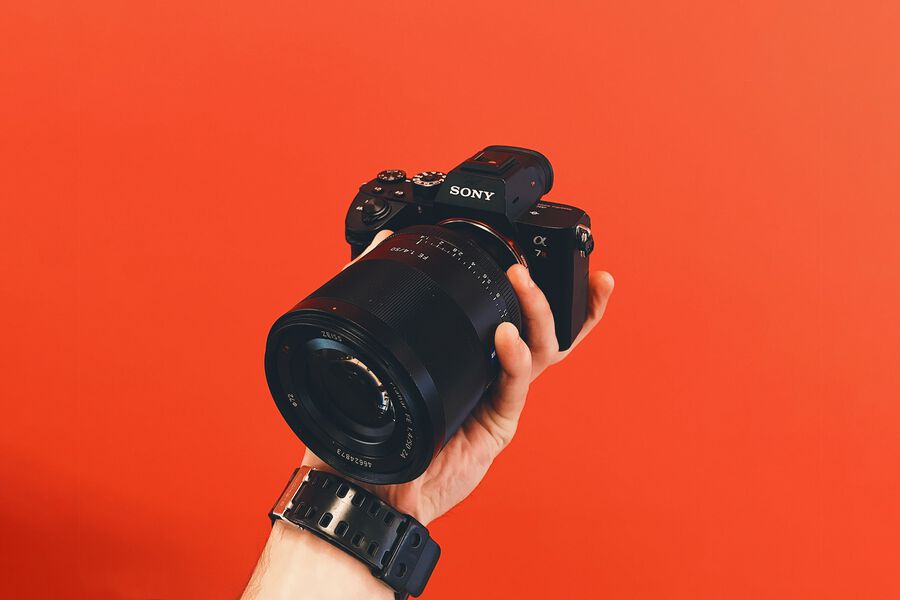Should I buy a full frame or an APS-C camera? Ahh, the ultimate question every photographer asks themselves every now and then. No matter where you look on the Internet, you will find lively debates over which format to choose, but more often than not, the discussion turns into us versus them and often results in more questions than answers.
I can't speak for other travel photographers, but as a solo traveler who is also a hybrid shooter (I shoot photos and videos), loves hiking, and enjoys going on long backpacking trips to remote places, I have decided to write this article to explain why I have chosen to stick with the Sony APS-C cameras all these years and why I will continue to do so for many years to come.
Table of Contents
- Differences Between APS-C and Full Frame Cameras
- What is a Full Frame Sensor?
- What is an APS-C Sensor?
- Full Frame VS APS-C: Why I Recommend APS-C Cameras Over Full Frame
- 1. Lighter-Load to Carry When Traveling
- 2. APS-C Lenses Are More Compact and Less Expensive
- 3. I Do Not Need the Full Frame Capabilities
- 4. Great Selection Of Lenses From Sony and Third-Parties
- 5. A Thriving Second-hand Market
- Which Sony APS-C Camera and Lens To Buy For Your Travel?
- Sony a6400 + 18- 135 mm F3.5 - 5.6 Kit Lens
- Sony a6600 + 16 - 55 mm F2.8 Sony G Lens
- Further Reading for Resources
[Show More]
Differences Between APS-C and Full Frame Cameras
First, in order to pick which format to choose, you will have to understand the difference between APS-C and Full Frame Sensors, and to understand that, we will have to go back in time, even before the birth of digital photography.
What is a Full Frame Sensor?
Back in the day, the 35mm-sized film (36 x 24mm) was the dominant standard of photography before the digital cameras came along. When the digital cameras took over, the term "full-frame" became a reference to the digital sensor size that matches the size of a single negative on a 35mm roll of film, hence the name "Full-Frame".
What is an APS-C Sensor?
APS-C, on the other hand, is a smaller or cropped version of its full-frame counterparts. APS or the Advanced Photo System image system was introduced back in the 90s, and it comes in varying sizes depending on the manufacturers. The "C" at the end determines the digital image format, so in this case, the "C" in APS-C stands for Classic format, which has a sensor size that measures 23.6 x 15.7mm.
No time to read?
Don't worry. You can save this page to Pinterest and come back later.
As you can see, the sensor size is the main difference between the two formats, and you can see exactly how this affects the photos with the image above. There are other factors to consider as well, such as low-light capabilities, image quality, dynamic range, etc.
Basically, with a larger sensor, the camera will be able to capture a larger field of view; hence, it can get more of the scene compared to shooting photos with an APS-C camera. Also, with the larger sensor, each individual pixel will be larger, allowing the camera to let in more light. This, in turn, improves low-light capability as well as image quality and dynamic range.
So is the Full Frame format better in every way? Yes and no. In terms of low-light capability, dynamic range, and image quality, yes. But in terms of cost, weight, and size, APS-C takes the cake with its more compact camera body, requiring less heavy glass in their lenses, and since there are fewer components, they are way cheaper than their full frame counterparts.
If you are a professional fashion photographer or a popular Youtuber (which they often recommend full frame) who has consistent streams of income and does not have to carry your entire camera gear on your back for hours on end, then the full frame, with its capabilities, is probably more suited for you. However, for the rest of us regular users, the cost and weight become major factors to consider.
With this in mind, from the perspective of a solo traveler, here are the main reasons why I decided to stick to my APS-C cameras instead of going full frame, as the rest of the internet seems to recommend.
Full Frame VS APS-C: Why I Recommend APS-C Cameras Over Full Frame
1. Lighter-Load to Carry When Traveling
As a traveler, the weight and size of our camera gear is one of the most important factors in deciding whether to invest in APS-C or Full Frame. As I mentioned earlier, due to the smaller APS-C camera body, the lenses and accessories are also more compact than their full frame equivalents.
With an APS-C camera, I had no trouble hauling all my camera gear around while hiking in the Himalayas for 15 days. I was able to carry 5 lenses and a tripod without them affecting the load of my already heavy bag.
With a regular trip, I can fit all my camera gear inside my Herschel Supply Little America backpack with plenty of room to spare for other necessary travel gear, such as water bottles and jackets.
And since I was able to carry more gear with less weight, as an amateur travel hybrid shooter, I was able to be more creative with what I shoot and maximize the quality of my work with the options I have.
With the 5 lenses I often take with me, I can adapt to almost any situation thrown at me. I think this is extremely important for a travel photographer, as things often don't go according to our plans and you have to always be ready for whatever random moment you encounter while on the road.
2. APS-C Lenses Are More Compact and Less Expensive
Talking about lenses, since the APS-C sensor is smaller, the lenses built for APS-C cameras do not require as many heavy glasses and components as full-frame lenses, which allows the manufacturers to design much more compact-sized lenses with almost equivalent capabilities to the full-frame lenses.
Fewer components also come with a cheaper price tag, and that in itself is already enough of a reason to consider investing in APS-C instead of full frame, especially for regular users like us.
To give you an example, the newly released Sony G lens, the 70-350mm OSS super-telephoto lens built for APS-C cameras, is designed for wildlife and bird photographers. It measures at 77 x 142 mm (3.03 x 5.59"), weighs 625 g (1.38 lb), and is priced at 900 USD.
Since the APS-C sensor is cropped with a crop factor of 1.5 (you can multiply the APS-C focal length by 1.5 to get the full-frame equivalent), the 70-350mm focal length is equivalent to a 105-525mm lens on a full-frame camera.
If you compare the size and weight of the full-frame lens with a focal length in the 100-500 range, such as the Sony FE 100-400 mm lens that measures 93.9 x 205 mm (3.7 x 8.07"), weighs 1,395 g (3.07 lb), and costs 2,500 USD, you start to see the difference in size, weight, and cost. Heck, you even get more range with the smaller, cheaper Sony 70-350 mm APS lens with a 525mm focal length.
To top it off, with cheaper and lighter lenses, you can also use the money you saved to invest in even more lenses and accessories for your travels, which I consider a much better value for my money than investing in the full-frame system where I might only be able to buy one lens for the amount of 3 APS-C lenses.
3. I Do Not Need the Full Frame Capabilities
One question I often asked myself when I was deciding between the 2 systems was, "Do I really need a full-frame camera?" After years of traveling with an APS-C camera, I can now answer this question with confidence: Nope, I do not need the full-frame capabilities, and here is why.
Like most of us, I do photography and filmmaking as a hobby, and my content is displayed mostly on a computer or a mobile screen. I have yet to print my photos out in photo books, and I do not plan on having my photos printed on large billboards anytime soon, so all those high-resolution capabilities of the full-frame camera are overkill for me.
And even if I want to print my photos out, the Sony a6500 APS-C camera with its 24.5-megapixel sensor is more than capable of producing enough detail for printed photos.
Sure, I wish my Sony a6500 were better in low-light like the Sony full-frame cameras, but I can simply invest in a faster aperture lens to compensate for its mediocre low-light capability. With the money I saved (around 600 USD) from choosing the APS-C camera body over the full frame, I could spend that money on better low-light lenses.
There are plenty of cheap options when it comes to APS-C lenses for you to choose from, with a good range of focal lengths. The Sigma Trio, 16mm F1.4, 30mm F1.4, and 56mm F1.4, are a great example of fast prime lenses that cost only 1,000 USD for all 3 lenses, and that leads me to the next reason.
4. Great Selection Of Lenses From Sony and Third-Parties
With the gaining popularity of APS-C cameras among regular users, Sony as well as third-party companies have started to develop more lenses for the ever-growing APS-C market, which has expanded the lens selection tremendously over the years.
Sigma, as I mentioned earlier, is starting to add more and more APS-C lenses to its lineup with high-quality glass at affordable prices. The Sigma Trio lenses are the best value lenses for the money and they cover most of the ranges regular users need. They are also considered to be one of the sharpest sets of lenses out there.
Sony has also been releasing professional-grade APS-C lenses in 2019 with the announcement of the Sony 16-55mm F2.8, which is one of the best all-around lenses you can buy, and the 70-350mm super-telephoto lens. With these two lenses, I won't need any other lenses anymore as they cover all the focal lengths a traveler like me will ever need, from wide landscapes to wildlife.
Rokinon (Samyang) as well as several other third-party manufacturers like Meike, Kamlan, and Venus Optics have been busy releasing their own sets of manual lenses for Sony APS-C cameras as well, with prices ranging from as low as 90 USD to 300 USD.
As you can see, there are plenty of great lenses at different price points available for the Sony APS-C cameras. With the commitment shown by Sony with their two new professional lenses released, I am now more convinced than ever that staying with the APS-C format is the right decision for me.
5. A Thriving Second-hand Market
I'm not gonna lie, I do not like spending a lot of money on things other than experiences. It physically pains me to spend 1,000 USD for a camera lens, and yet, ironically, I can spend that same amount on a flight to South America in the blink of an eye.
And so, when I discovered a thriving Sony second-hand market on Facebook here in Thailand, I was overjoyed by all the options I have for good APS-C lenses without having to sell my kidneys to buy them.
And if I were able to find an active Sony second-hand market in a country as small as Thailand, I am sure you would have no trouble finding even more active second-hand markets in places like Europe and the US.
With such an active second-hand market like this, I was able to swoop in and get a newly released lens for $400 less than the retail price. I recently bought a $1400 Sony 16-55mm F2.8 lens, which is the lens I highly recommend for all travelers, for less than $1000 used but in mint condition, and I cannot be happier with the purchase.
Most of the time, the second-hand market is for both full-frame and APS-C users. But what is great about staying with the APS-C camera is that you will often find people who are upgrading their gear to full-frame and are looking to sell all their APS-C gear for cheap. This is when you swoop in and grab all the cheap APS-C lenses for yourself, which I often do. The possibilities are endless!
Which Sony APS-C Camera and Lens To Buy For Your Travel?
Sony a6400 + 18- 135 mm F3.5 - 5.6 Kit Lens (Beginner)
So if you are starting out and have decided to go for APS-C cameras as your first camera, I highly recommend you get the Sony a6400 APS-C Camera with the 18-135mm kit lens. The a6400 comes with a 24.2MP APS-C cropped sensor, a new processor, 4K video recording capability, extremely fast autofocus, a LOG picture profile system, and many more.
With this combination of the 18-135mm kit lens, it should give you all the range you need for your travel while keeping the setup light and affordable. For both the lens and the body, it should cost around 1200 USD or even less if you don't mind buying used.
After you are used to photographing with this setup, you can then upgrade your lenses from there with a Rokinon 12mm F2 (300 USD) for super wide-angle shots and astrophotography, a Sigma 56mm F1.4 (400 USD) for portraits, and a Sigma 30mm F1.4 (249 USD) for low-light. You should be golden.
Check Price for Sony a6400 + 18 - 135 mm Lens
Sony a6600 + 16 - 55 mm F2.8 Sony G Lens (Advanced)
If you want the best that the Sony APS-C lineup has to offer and money is no object for you, then I recommend getting the Sony a6600 together with the Sony 16-55mm F2.8 lens. This ultimate setup will provide everything you need from a travel camera: a good zoom range in one body, a fast aperture at F2.8 (making it great for low-light), long battery life, best-in-class autofocus, and so much more.
Basically, it is the perfect camera and lens combination for travelers who are looking for a lightweight but highly capable camera with one lens to rule them all for their trips.
You can also go even further and add the Rokinon 12mm F2 (300 USD) to cover the ultra-wide-angle focal length and the Sony 70-350mm (900 USD) (my review of this lens here) to cover the super-telephoto range. With these, you no longer need any other lenses for your travel.
Check Price for Sony a6500 + 16 - 55 mm F2.8 Lens
And there you have it, my answer to the question, "Should I buy a full-frame or an APS-C camera?" all from a traveler's perspective, and the 5 reasons why I decided to stick to the APS-C camera, contrary to what everyone on the Internet is doing, which is to go full-frame right out of the gate without even assessing if they actually need it.
What do you think of my reasoning? Do you agree? Feel free to express your opinion down in the comments below, and let's keep the discussion constructive and civil 😉.
That is it for Full Frame VS APS-C Cameras: Which One Should I Get For Traveling?. Have we missed anything? Have you found the guide useful? Let us know in the comments below!
Want to take your photography game to the next level? Here are some resources to help you upgrade your work and photography gear:
Lightroom Presets: If you are looking for a quick way to make your travel photos look like mine, you should check out my newly released Lightroom Preset Collections.
Camera: Sony a7R V, the highest resolution full-frame camera out there, is my go-to camera when I travel. All of my recent photos and videos are all from this beast.
All-Around Travel Lens: Sony 24-70mm f2.8 GM II lens is the lens I mounted on my camera the most. The lens covers most of the ranges I need for travel from wide to telephoto. If I have to take only one lens with me on my travel, it would be this lens.
Ultra-Wide Lens: Sony 16-35mm F2.8 GM II Lnes: An ultra-wide lens I often use to shoot expansive landscapes and capture massive architecture I stumble upon while traveling.
Telephoto Lens: Sony 70-200mm F2.8 GM II lens is one of the most versatile lenses to have. It is great for picking out details in landscapes and capturing wildlife when combined with the Sony FE 2x teleconverter.
Portrait Lens: Sigma 85mm F1.4 DG DN Lens is the most compact and lightweight 85mm F1.4 lens out there. It's sharp and produces stunning bokeh for subject separation, perfect for portraits and street photography.
Drone: DJI Mavic Mini 2, a perfect drone for those who travel light. It weighs less than 250g and smaller than an iPhone when folded and can capture 4K video as well as 12 megapixels RAW photos. More than enough for its size.
Bag: Langly Alpha Globetrotter is a camera bag I use to carry all these lenses as well as other essentials when I'm traveling.
Further Reading for Resources
Looking for more articles to help you with your travel, may it be camera gears or clothing? Here are a collection of articles you might like:
- Ever wondered what a full-time travel blogger like myself carries in my camera bag? Check out: What's In My Camera Bag in 2024?
- Looking for the very best travel full-frame camera to buy for your next trip? How about the Sony a7C, the smallest full-frame camera with EVF in the world! Check out my review: A Traveler's Review: The Sony a7C Camera
- For APS-C camera owners out there, check out: What's In My Camera Bag? - A Gear Guide to the Sony APS-C Cameras.
- Looking to buy a new travel camera but not sure where to start? Check out our camera guide on 10 Best Travel Cameras to Buy.
- Bought a new camera and not sure what camera accessories to buy? Check out: 12 Best Sony Camera Accessories You Should Buy.
- Looking for a good-looking and functional camera strap to buy? You are going to love the Langly Tactical, Premium Leather, and Paracord camera straps. Check out my review here: A Traveler's Review: Langly Camera Straps.
- Want to start a YouTube channel and looking to buy new cameras for travel vlogging? Check out: 8 Best Cameras For Travel Vlogging to Buy.
- Finding a great camera bag you can travel with is not as easy as it sounds. If you are looking for one, here are the 10 Best Camera Bags for Travel, Backpacking, and Hiking You Should Buy.
- Now, if you are looking for a camera sling/shoulder bag instead of a full-fledged camera backpack to travel with, here are the 11 Best Camera Sling/Shoulder Bags For Travel.
- Looking for the most versatile camera sling bag? Check out: A Traveler's Review: WANDRD Roam (Rogue) Sling.
- For a smaller setup, the Nomatic McKinnon Sling is a great camera bag to check out. Here is A Traveler's Review: Nomatic McKinnon Camera Sling 8L.
- If you are looking for gifts to buy for your photographer loved ones, check out: 12 Cool Gifts To Buy For Travel Photographers.
- Traveling light with camera gear is all about balancing between what you need and what you want. Here are the 8 Best Tips For Traveling Light With Camera Gear.
- After years of research, I finally found the most beautiful camera backpack of all! Check this out: A Traveler's Review: Langly Alpha Globetrotter Camera Backpack.
- If you are looking for a great camera accessory to help improve your travel photography skills, check out: 12 Best Sony Camera Accessories You Should Buy.
- Are you looking for the best travel camera for your next trip? Why not consider the Sony a6500? Here's why the Sony a6500 is the best travel camera.
- If you want to carry just one lens when you travel, here is why the Sony 16-55mm F2.8 is the best travel lens to get for your Sony a6600 or a6500.
- This is the one lens I never knew I needed, but now that I have it, I can't travel without it! A Traveler's Review: The Sony E 70-350mm F4.5-6.3 Lens.
- An ultra-wide lens is perfect for travel, and there is no better lens than the Sony 10-18mm F4 lens. Here is why: Traveler's Review: Sony 10-18mm F4 lens.
- Wondering which Sony Mirrorless camera is right for you? The Best Sony Travel Cameras to Buy in 2024.
- Just bought a new Sony mirrorless camera? Check out: 15 Tips & Tricks for Your New Sony a7C, a7III, and More.
- Wondering which lenses to buy for your Sony cameras? Check out The Best Travel Lenses For Sony a7III, a7C, a7RIV, and More.
- Looking for a compact and lightweight travel telephoto lens for wildlife and landscapes? You are going to love this lens. Here is A Traveler's Review of the Tamron 70-300mm F4.5-6.3 lens.
- If you are looking for a review of the first Sony 24-70mm F2.8 GM lens and want to see if it is worth buying now, check out: A Traveler's Review of the Sony 24-70mm F2.8 GM Lens.
- The king of travel lenses has arrived. The Sony 24-70mm F2.8 GM II lens is, hands down, the best travel all-purpose zoom lens I have ever owned. Here's why: A Traveler's Review: Sony 24-70mm F2.8 GM II Lens.
- Sony 70-200mm F2.8 GM II OSS lens is, hands down, the best telephoto lens to get for your Sony cameras, but it comes with an extremely high price tag. Here is a complete traveler's review of the lens: A Traveler's Review: Sony 70-200mm F2.8 GM II OSS Lens.
- Looking for a lightweight and affordable landscape/architecture travel lens that is also extremely capable? Here is A Traveler's Review of the Sigma 16-28mm F2.8 DG DN Lens.
- Looking for the best travel portrait lens to buy for your next trip? You can't beat the Sigma 85mm F1.4 DG DN lens. Here is A Traveler's Review of the Sigma 85mm F1.4 DG DN Art Lens.
- Picking a camera body is one thing, but picking the lenses is a whole different game. Here is the ultimate guide to the best travel lenses for the Sony a6500.
- Looking for the best street and travel photography lens? Here is why the Sigma 56mm F1.4 is The Best Travel Photography Lens For Sony APS-C.
- GoPro is good and all, but did you know that there are many other GoPro alternatives that are better and cheaper? Here are the 8 Best GoPro Alternatives You Should Buy in 2024.
- Looking for a great drone to travel with? Why the DJI Mavic Mini is the Best Drone for Travelers.
- The best travel drone just got even better. Here is A Traveler's Review of The DJI Mini 2 and why it is the best travel drone to buy.
- Already have a Mavic Mini or looking to buy one? Here are 25 Tips and Tricks for New DJI Mavic Mini Owners.
- For more travel drone options, be sure to check out the 8 Best Drones for Travel to Buy in 2024.
- Looking for the best travel wireless earbuds or headphones? Here are the 7 Best Travel Wireless Earbuds & Headphones to Buy.
- You can't travel without a backpack, and if you are looking for one, check out my guide on the best Herschel Supply backpacks for travelers.
- If you like hiking and going on adventures for weeks on end, you are going to need a bigger backpack. Here is Why the Osprey Atmos AG is the Best Hiking Backpack to Buy.
- If you are into making travel videos, here is my ultimate advanced filmmaking gear guide.
- Planning to go on your first-ever hiking trip? Here is How to Pack for Hiking and Camping.
- Technical hiking gear doesn't have to be ugly. Here is a guide to hiking gear that actually looks good on you.
- If you are a light-weight traveler and are looking for powerful gear to go with your setup, check out the extremely light-weight photography gear guide.
- Looking for gift ideas for your traveler friends or family members? Here are 16 Best Gifts to Buy for Travelers/Backpackers.
- Or, if you are into gadgets, here is a quick guide on 7 tech gadgets you should buy this year.
- Are you a Fujifilm camera user and are currently looking for lenses to buy for your next travel? Check out The Best Travel Lenses For Your Fuji Cameras.
- If you are a blogger as well and are looking for free travel images to spice up your content, check out the 9 Best Websites to Find Free Travel Images.
- Want to know the secrets on how to travel the world cheaply? Check out: 16 Best Tips on How to Travel the World Cheaply.
- Looking for an Airbnb alternative for a better and more authentic stay in a place you are visiting? Here are the 8 Best Airbnb Alternatives to Use.
- Looking to plan your first backpacking trip around the world? Check out: How To Plan A Backpacking Trip.
- For more resources like this, visit my Resources page.
- Want to learn how I was able to take so many good pictures of myself while I travel solo? Check out: How To Take Great Pictures of Yourself.
